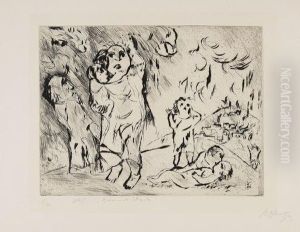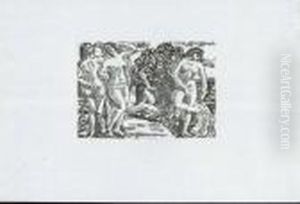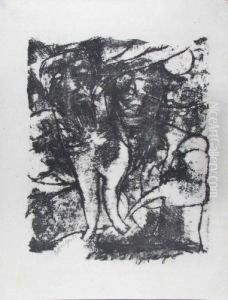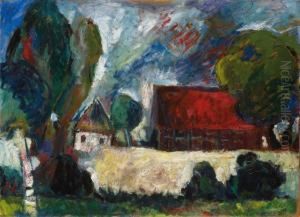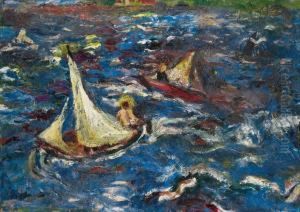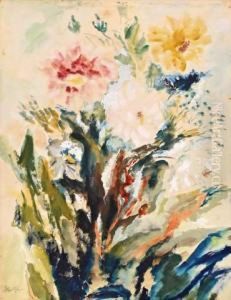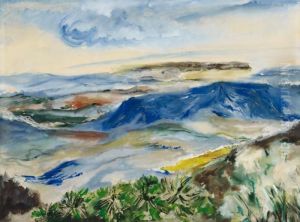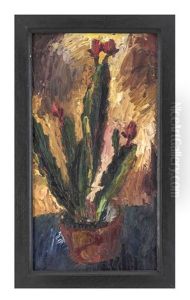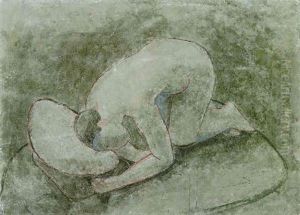Bernhard Hoetger Paintings
Bernhard Hoetger was a German artist, sculptor, and architect, whose work left a significant mark on European art, particularly within the Art Nouveau and Expressionist movements. Born on May 4, 1874, in Dortmund, Hoetger initially trained as a blacksmith before pursuing his passion for art. His journey into the art world led him to Munich, Paris, and eventually to Darmstadt, where he became part of the Darmstadt Artists' Colony, a hub for avant-garde art and architecture in the early 20th century.
In Paris, Hoetger was greatly influenced by Auguste Rodin, under whom he worked, and by the vibrant artistic community in Montparnasse. His style evolved from traditional sculptures to more expressive forms, reflecting the dynamic changes in European art during his lifetime. Hoetger's work encompasses a range of media, including sculpture, relief, painting, and architecture, often blending these disciplines to create holistic art environments.
One of Hoetger's most notable contributions is his work in Worpswede, a village in Northern Germany that became a nucleus for artists and writers. Here, he collaborated with the painter Paula Modersohn-Becker and contributed to the artistic landscape with his unique architectural and sculptural works. However, his most ambitious project was the Böttcherstraße in Bremen, a street transformed into a total work of art, showcasing Expressionist architecture, sculpture, and applied arts. This project, commissioned by the coffee magnate Ludwig Roselius, includes the iconic Paula Modersohn-Becker House, the Atlantis House, and the Robinson Crusoe House, among others, and stands as a testament to Hoetger's visionary approach to art and space.
Hoetger's later years were shadowed by the political climate of Nazi Germany, which deemed his work degenerate. This condemnation, coupled with the evolving tastes in art, led to a period of isolation and financial difficulty. Nevertheless, Hoetger's legacy as a pioneering figure in the blending of art forms and as a key proponent of early 20th-century avant-garde movements endures. He passed away on July 18, 1949, in Interlaken, Switzerland, leaving behind a body of work that continues to be celebrated for its innovative approach and artistic depth.
